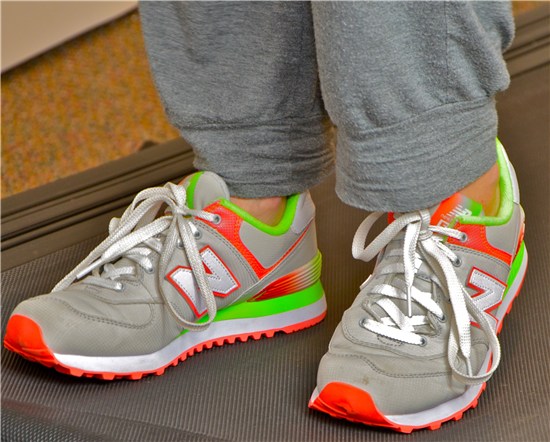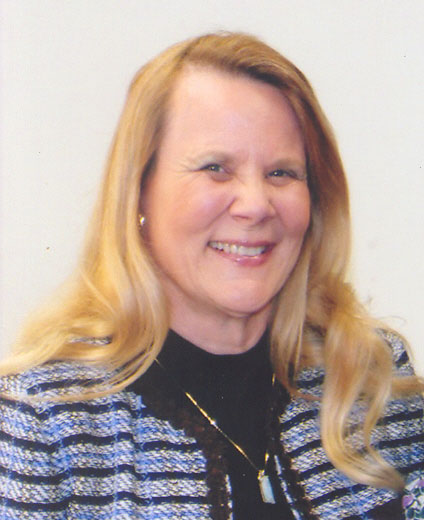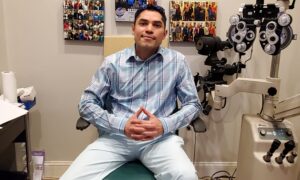By Pamela Miller, OD, FAAO, JD, DPNAP
SYNOPSIS
 Obesity is an American epidemic–and it affectsyour patients’ eye health. Guidingpatients in a fitness direction should be part of your treatment plan.
Obesity is an American epidemic–and it affectsyour patients’ eye health. Guidingpatients in a fitness direction should be part of your treatment plan.
ACTION POINTS
RAISE AWARENESS.Explain how obesity impacts blood vessels at back of eye and retina damage.
TALK EYES & EXERCISE. You can point out how polarized sunwear and contact lenses can make exercise easier.
TALK FITNESS WITH PARENTS AND CHILD. Ask the child about after school activities, suggest activities like dancing even the non-sporty may enjoy.
Few realize that weight and eating habits impact eye health. If a patient who is clearly overweight comes into your practice and has diabetes or a family history of diabetes, discussing eating habits should be part of your treatment plan.Other diseases in the patient’s family history that are connected to obesity include heart problems and hypertension (high blood pressure).
Obesity and Eye Health:
Resources for Doctor-Patient Discussions
NIH: “Obesity and Eye Diseases.” This report, from the National Institute of Health, offers a comprehensive look at the impact of obesity on age-related cataract, glaucoma, age-related maculopathy, and diabetic retinopathy. While the report is clinical, there are ample opportunities here for ODs to cite the study when discussing eye health with patients.
The Vision Council “Your Eyes and Your Health.” This is a consumer-friendly article that presents the effect of smoking and exercise, among other factors on eye health.
All About Vision.This consumer information site has a number of articles on eye conditions in which the effect of obesity is discussed as a factor. ODs can utilize these articles in discussing the importance of making healthy eating and lifestyle choices. Search “Obesity and Eye Health.”
RAISE AWARENESS
When doing the fundus exam, BIO or auto-florescence test, let patients know what you are looking for. You might say: “Now, I’m going to check the back of your eyes to make sure your retina is healthy including all the blood vessels in your eyes. Last year, remember, we noticed the beginnings of diabetic retinopathy, so I want to make sure that is beginning to improve, or at least is stable, or has not gotten worse.”
You would then ask the patient about the status of her nutritional habits and explain how the diabetic retinopathy is impacted by her ability to keep her weight, and diabetes, in check: “Peggy, your diabetic retinopathy has not gotten worse, but we need to be very careful about this.
It is important for your overall health to control your diabetes, and controlling it also will help control the damage to your retina. As your primary doctor has explained, diet is an important tool to controlling your diabetes. What is your diet like these days? How many servings of vegetables and fruits do you eat every day and are you exercising? What are your sugar readings or your blood pressure reading?
Then, don’t forget to document this information, along with whether the patient is controlled, and if so, by medication or diet, etc. If you take the blood pressure or blood sugar test in your office, then make certain you record your findings.
USE EYEWEAR NEEDS CONVERSATION TO TALK EXERCISE
You already should be speaking with your patients about their lens needs according to lifestyle, so what better time to broach the topic of staying physically active?
For example, when you review all of the patient’s current eyewear and then discuss new eyewear needs, you could bring up the topic of exercise: “Tom, I see that you have Transitions in your glasses and that seems to be working well for you most of the time, but what about when you exercise? As I mentioned, fitness is an important part of keeping you–and your eyes–healthy, so you should be making exercise a regular part of your routine.” If “Tom” lets me know he is not currently exercising, but says he plans to join a local hiking club and also plans to start playing tennis again, you could suggest: “You know, Tom, it sounds like you could benefit from prescription polarized sunwear for hiking in the bright sun and maybe a some contact lenses for when you play tennis. You don’t want your glasses falling off and getting damaged while you play.”
Tips for Your Patients:
Healthy Body, Healthy Eyes
Your patients may need help on their way to getting healthy. Here are suggestions that have worked well for my patients:
- “You love ice cream? How about frozen yogurt instead, and a cup instead of a bowl?”
“Try a smaller dinner plate. Use a smaller plate to trick your brain into thinking you’re eating the same amount, while you’ll really be eating less.”
“Change the mix on your plate so the dominant foods are always fruits and vegetables with only small portions of meat.”
“Have everyone come up to the counter or stove to get their food and then put any leftovers away. Not having the remaining food on the table makes ‘seconds’ much less likely.”
“Make vegetable soup on the weekend, and freeze it so you can eat it throughout the week.”
You’ll be accomplishing two goals at one time, simplifying the task: Addressing (and selling) needed eyewear and contact lens needs, and, in the process, pointing out the importance of keeping active–while properly protecting the patient’s eyes.
TALK CHILDHOOD FITNESS WITH PARENTS AND CHILD
When you have an obese child in your exam chair and a parent by your side who also may be obese, discussing nutrition and weight control can be difficult. You want to be diplomatic and non-judgmental, but you don’t want to shy away from the subject. You can do this in a non-threatening way by simply asking the child what she likes to do when she’s not in school. “Jane, your mother tells me you’re doing well in school and that your favorite subject is math. That’s great! What do you do when you’re not in school?” Be prepared to continue the conversation even if the child and parent indicate the child is not the sporty or outdoorsy type. For instance, the child might say in response: “I like movies and playing games on my phone. After I finish my homework I’m allowed to use my iPhone and iPad to play games, which I really like. I like to read sometimes, too.”
Your response to the child: “Movies, video games and reading are fun! But how about staying active? Remember when I was examining the back of your eyes? To stay healthy, including keeping the blood vessels and retina inside your eyes in good shape, you need to stay fit, which means exercising a little everyday and being sure to eat lots of fruits and vegetables. “Are there activities you think you might like to try? If you don’t like sports, there are other things you could try. Even dancing or ice skating, or sports you might not have thought of like karate, can be great at keeping you healthy, and are a lot of fun, too.
To parent: “Denise, it’s important that you and Jane, and your whole family, stay active and watch what you eat. I noticed that you have a family history of hypertension and heart disease. The high blood pressure puts you at risk for glaucoma. Have you spoken to your family doctor about ways you and your family can stay fit and have a healthy diet? You may want to work with a nutritionist who can put together a meal plan for you, and maybe recommend a family exercise regimen.
Resources to Pass Along to Patients
The following books on healthy eating were written by ODs:
“Eyefoods: A Food Plan for Healthy Eyes” and “Eyefoods for Kids: A Tasty Guide to Nutrition and Eye Health” by Laurie Capogna, OD
“Visionary Kitchen: A Cookbook for Eye Health” by Sandra Young, OD
“Smart Medicine for Your Eyes: A Guide to Natural, Effective, and Safe Relief of Common Eye Disorders” by Jeffrey Anshel, OD
Related ROB Articles and Videos
VIDEO: Vision for Life: Creating a Holistic Eyecare Practice
Nutritional Supplements: Practice Preventative Eyecare
OD as Educator: Combat Misleading Scientific Information
 Pamela Miller, OD, FAAO, JD, DPNAP, has a solo optometric practice in Highland, Calif. She is an attorney at law, holds a therapeutic license, is California State Board-certified and glaucoma-certified to prescribe eye medications, and offers comprehensive vision care, contact lenses, visual therapy and low vision services. To contact her: drpam@omnivision.com.
Pamela Miller, OD, FAAO, JD, DPNAP, has a solo optometric practice in Highland, Calif. She is an attorney at law, holds a therapeutic license, is California State Board-certified and glaucoma-certified to prescribe eye medications, and offers comprehensive vision care, contact lenses, visual therapy and low vision services. To contact her: drpam@omnivision.com.



























